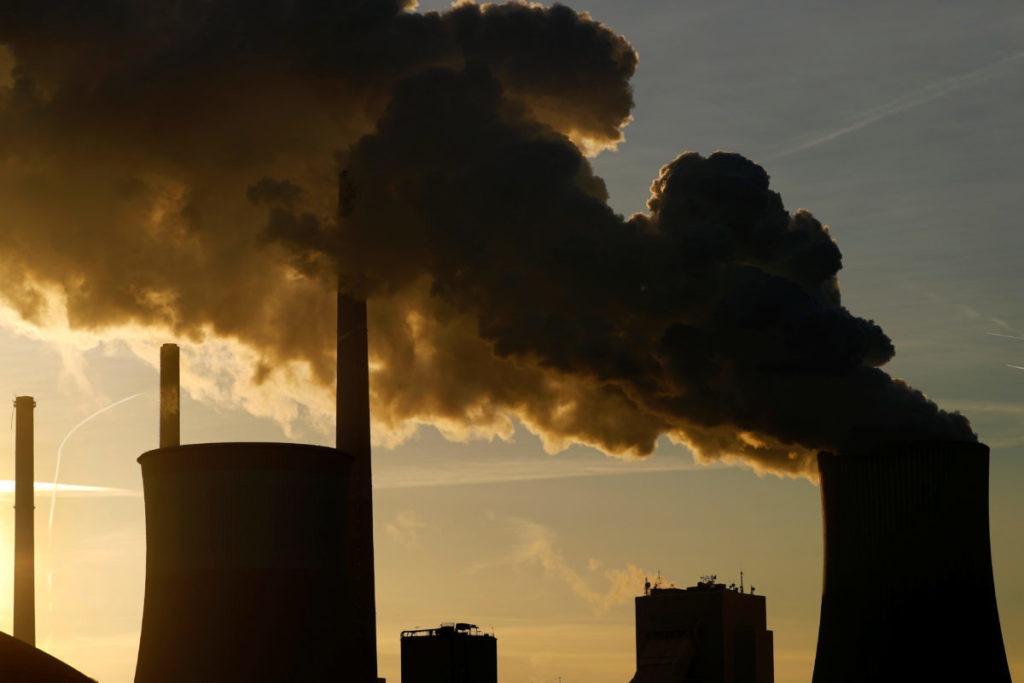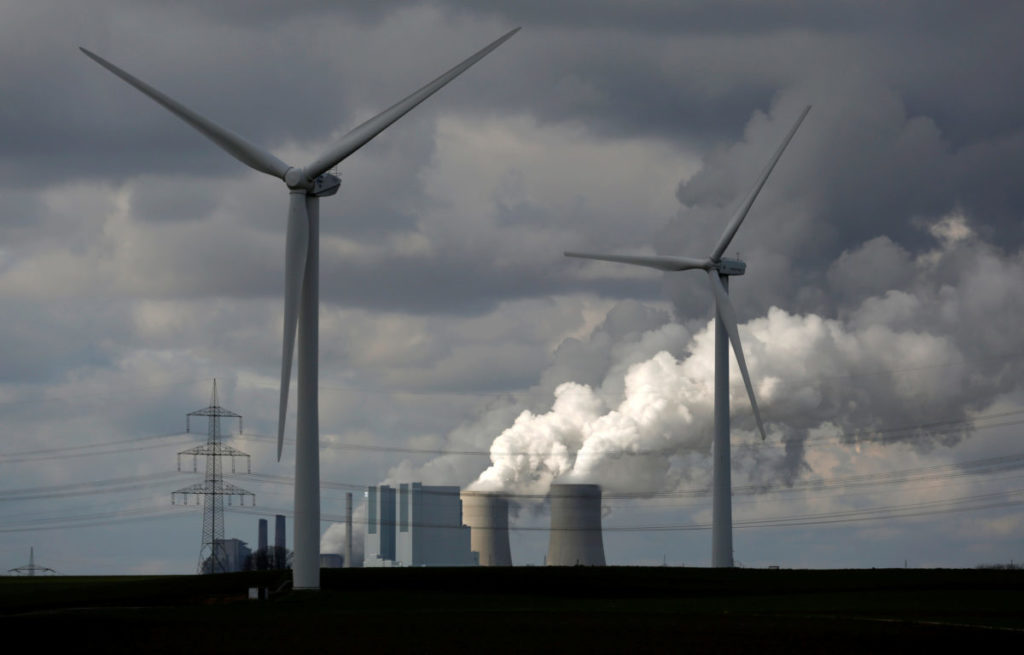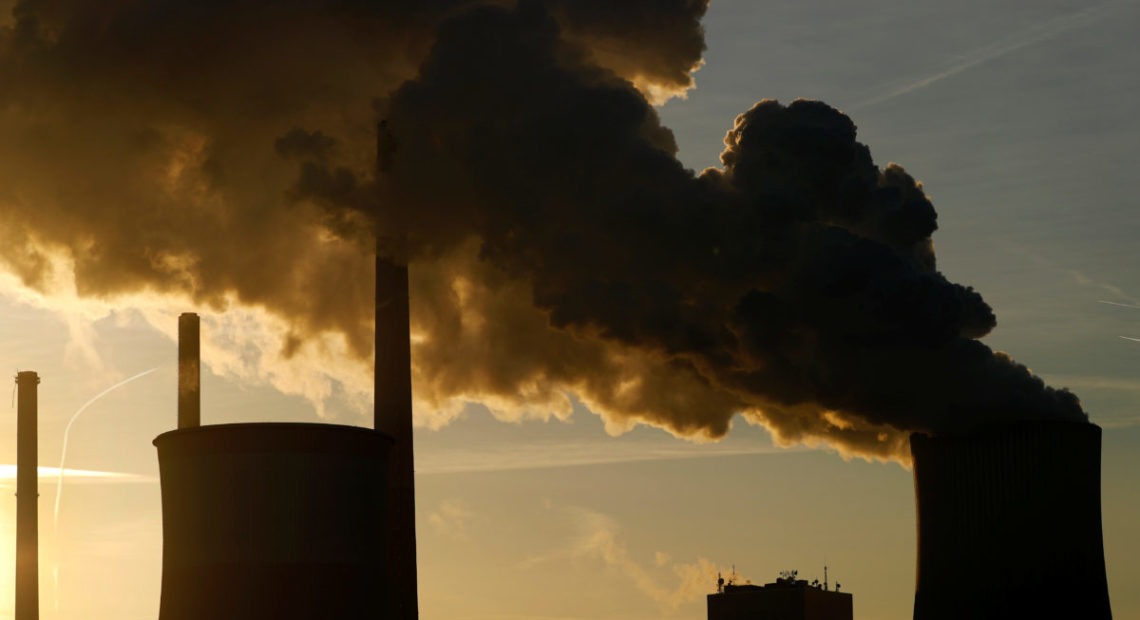Programming Note: For more coverage of climate and the environment, listen to NWPB’s News service stations or stream live online:
–Climate One / Saturdays, 7 to 8 PM
–Living on Earth / Saturdays, 8 to 9 PM
–Science Friday / Fridays, 11 AM to 1 PM; repeat Saturdays 9 to 11 PM
In front of a gathering of arguably the most powerful leaders in the world, 16-year-old Greta Thunberg opened with a warning: “We’ll be watching you.” Thunberg made her speech to the United Nations Climate Summit in New York City on Monday, serving as an ostensible reminder to most nations of their Paris accord pledges to reduce carbon emissions.
The summit kicked off a day after the UN released a report outlining the current status of the Earth’s carbon emissions and atmospheric tumult. Aside from the revelation that 2015 to 2019 appears to be the warmest five-year period in history, the report cited how far nations will need to go to waylay the worst outcomes of global warming. In order to limit warming to just 2 degrees Celsius, the effectiveness of global climate policies need to triple in scale, the report said.
That’s especially true for the top-10 global emitters of carbon dioxide, as measured by the European Commission in 2017:
1. China: 10.8 million metric tons
2. United States: 5.1 million metric tons
3. European Union: 3.5 million metric tons
4. India: 2.5 million metric tons
5. Russia: 1.8 million metric tons
6. Japan: 1.3 million metric tons
7. South Korea: 0.67 metric tons
8. Iran: 0.67 million metric tons
9. Saudi Arabia: 0.64 million metric tons
10. Canada: 0.61 million metric tons.
Those 10 countries account for approximately 70 percent of the world’s emissions, and all except one — India — are not on pace to meet the climate goals needed to prevent 2 degrees Celsius of warming. (Reminder: Two degrees of warming above pre-industrial levels would be catastrophic, but even 1.5 degrees could make Earth inhospitable to human life and the planet is already halfway there.)

The coal power plant “Staudinger” by energy company Uniper is photographed during sunrise in Grosskrotzenburg, 30km outside Frankfurt, Germany, February 13, 2019. CREDIT: Kai Pfaffenbach/Reuters
If the goal is to stabilize temperatures, then emissions must fall to zero or carbon may even need be extracted from the atmosphere — either through planting trees, caring for soil or through technological advancement. In order to be effective, those activities must happen in every country, across the income spectrum.
“The developing world isn’t really going to act seriously on reducing emissions until the developed world steps up and starts leading the way,” said Noah Kaufman, a research scholar at Columbia University’s Center on Global Energy Policy.
Here’s where each of the top-10 nations is succeeding and falling behind with their climate mitigation — and how they can improve, according to energy experts and the Climate Action Tracker, an independent group of analysts that tracks government climate action and keeps tabs on the progress individual nations are making — or not making — toward their climate commitments
China is winning on energy efficiency, but losing on coal
“China is quite good in developing new renewable energy and supporting electric vehicles,” said Niklas Hohne, a climatologist, founding partner of the NewClimate Institute and creator of the Climate Action Tracker.
Launched in 2009, Climate Action Tracker calculates whether a country’s actions are sufficient to prevent significant warming, based on a nation’s “fair share” — the actions each nation must contribute to satisfy the goals outlined by the Paris accord. Fairness can feel like a subjective measure, so the team uses a variety of criteria — such as past emissions, per capita pollution and economic capability — to determine the shares.
China has made hefty investments in renewables and electric cars, significantly leveling off the growth rate of their carbon emissions. From 2001 to 2010, China’s carbon dioxide emissions increased 137 percent. Since then they’ve grown 8 percent.
Despite this progress, the Climate Action Tracker gives China a grade of “highly insufficient” because of their continued reliance on coal. The nation’s renewables push also appears to be stalling.
“China is still unfortunately failing at stopping the building of new coal-fired power plants,” Hohne said. “China is not doing that only at home, they are also financing coal fired power plants outside of the country, so increasing emissions elsewhere.”
United States has flat emissions, but that’s not necessarily a good thing
The United States is stuck in neutral. Coal plants, historically large contributors to energy emissions, are being displaced by natural gas — which emits about half as much carbon — and renewable sources like wind and solar.
Even with those shifts, “the U.S. will basically be flat on emissions from now on if nothing changes significantly. And that is not sufficient at all,” Hohne said. “The emissions have to decline, go to zero by 2050.”
WATCH: Why extreme climate scenarios no longer seem so unlikely
Kaufman added that outside of a handful of cities and states — including but not limited to California, New York and Washington — the country is treading water because national progress on carbon is being counteracted by the Trump administration’s industry deregulation and rollback of environmental policies.
“The U.S., which probably more than any country in the world has a responsibility to reduce its emissions rapidly and lead on climate, is doing the opposite,” Kaufman said.
The United States receives a worse ranking than China — “critically insufficient” — from the Climate Action Tracker.
European Union is still trailblazing but also learning from mistakes
Being a frontrunner requires bravery, but inherently that also means that mistakes will be made.
The European Union adopted a two-degree-limit as a climate target 20 years before most of the world followed suit with the Paris accord in 2015. The European Union became an early serious adopter of renewable energy and energy efficient buildings — but had some miscues, too.
One example revolves around international carbon offsets. Often a component of cap-and-trade programs, international offsets call on developed nations to encourage carbon cuts in other countries, rather than executing them at home.
“In theory, the system says if we can encourage emissions reductions in the developing world for a cheaper price than we can do it here, that’s a win-win,” Kaufman said.
But the early iterations of these programs were a disaster, he said, because European officials had a hard time verifying emissions reductions in the developing world due to a dearth of local oversight, corruption and fraud. The 2008 global financial crisis also threw off the ability to efficiently set carbon caps because of energy prices.

Wind turbines are seen in front of a coal power plant of German utility RWE Power near the western town of Neurath Feb. 28, 2014. CREDIT: Ina Fassbender/Reuters
Kaufman said the European Union has tightened these caps, leading to significant reductions in energy emissions over the last two years.
Room for improvement still exists for countries like Germany, which despite leading much of the charge on clean energy, could individually rank in the top-10 list of carbon emitters if not for its membership in the European Union. Germany remains Europe’s biggest consumer of coal, and energy transition to renewables has arguably stalled.
Even though the country continues to roll out bids to have net-zero emissions by 2050 and new climate policies like carbon prices for economic sectors, transportation and buildings, Hohne said what Germany lacks is a long-term vision.
Both he and Kaufman contrast Germany with the U.K., which enlists a group of scientists to reassess if British climate targets are being met and, if not, update the country’s policy every five years.
“The U.K. is a terrific example,” Kaufman said. “They’ve put in place a carbon price floor, support for renewable energy and coal phase outs. The combination has basically gotten rid of coal in their power sector over the last five years, which is pretty remarkable.”
The Climate Action Tracker argues that similar concrete targets need to be expanded across the 28 states in the European Union, which are as a group graded as insufficient.
India is ahead of the pack
India catches flack in the mainstream press because its emissions have increased 300 percent in 20 years, but the Climate Action Tracker lists it as the only G20 nation whose actions are compatible with keeping global warming under 2 degrees Celsius. (Only two countries in the world are currently compliant with the 1.5-degree-climate commitment: Morocco and The Gambia)
That’s because, compared to nations like the U.S. and China, India’s legacy of emissions is low. The nation’s carbon pollution also remains limited relative to the size of its population, thanks to the Indian government’s efforts to transition people away from large modes of transportation to small electric-powered scooters and three-wheelers.
India has also emerged as a leader in the energy transition, with solar and hydroelectric accounting for 34 percent of its power capacity. But the South Asian nation still relies on coal for more than half of its energy.
At this week’s U.N. climate summit, Indian Prime Minister Narendra Modi announced his intentions to expand renewable energy, but his plans would fall short of hitting a 1.5-degree-climate commitment. That’s because it’s unclear if India will significantly scale back on coal going forward.
Japan is considering life after Fukushima
Japan has traditionally excelled at energy efficiency in cars and its industries. But the Fukushima accident in 2011 was a fundamental shock to Japan, so much so that the nation shut down all of its nuclear plants and announced a complete review of its energy policy.
Coal-fired power has risen in the absence of nuclear power, which cut into the country’s progress on carbon reduction.
Now, leaders are considering whether they should revamp these nuclear power plants, build more coal plants or switch investments to renewables, Hohne said. Japan’s climate mitigation gets a middle-of-the-road grade of “insufficient” in the Climate Action Tracker.
South Korea is ambitious but a work in progress
South Korea, like Germany, has announced ambitious short-terms plans for climate action, but its national policies don’t back up those goals. For instance, South Korea, like China, has begun constructing coal plants outside of its borders. It received a “highly insufficient” rating from the Climate Action Tracker.
Russia, Iran and Saudi Arabia: Putting the oil in oil states
Though Russia signed onto the Paris accord in 2016, it did not adopt the measure until Monday (though the ratification came from the Prime Minister Dmitry Medvedev rather than the nation’s parliament).
Despite this move, Hohne said oil-dependent Russia has made little indication that it plans to decarbonize.
“There are players in the country that want to do more. They talk about renewable energy for example, but so far I don’t see any progress at all,” Hohne said. Russia earns a “critically insufficient” grade in the Climate Action Tracker.
Saudi Arabia carries the same rating, given it is considered a classic oil producer, Hohne said.
WATCH: Morocco turns the Sahara desert into a solar energy oasis
The gulf state has proposed the adoption of renewable energy, launching the largest solar farm in the world last year that could cover Manhattan, parts of New Jersey and a chunk of Long Island with room to spare. But nearly nine out of $10 made by the Saudi Arabian government and nearly half the country’s GDP are tied to petroleum, meaning a clean energy transition would basically require transforming the nation’s whole economy, Hohne said.

Workers are seen at the solar plant factory in Uyayna, north of Riyadh, Saudi Arabia April 10, 2018. CREDIT: Faisal Al Nasser/Reuters
In Iran, sanctions have not only stopped trade, but also impaired the oil-laden country’s ability to invest in renewable energy. Iran signed the Paris agreement, but its parliament hasn’t ratified the measure.
“The sanctions and the political situation make it very difficult to plan in any way forwards,” Hohne said, and this lack of a climate mitigation policy explains why it has no grade in the Climate Action Tracker. “They need technology and knowledge from outside. If that’s not happening, then emissions will continue to rise.”
Canada is pushing carbon prices but that may change
Kaufman cites Canada, like the U.K., as another example of a country with long-term visions toward serious reductions in emissions. Last year, Prime Minister Justin Trudeau’s administration implemented the Greenhouse Gas Pollution Pricing Act, which called on its provinces to set their own carbon taxes — or be subject to a federal tax.
“It’s essentially a federal backstop program or a minimum requirement for either carbon prices or emissions caps,” Kaufman said. “They’re ratcheting up to an economy-wide carbon price of about $50 a ton over the next few years, which is a really serious policy.”
But Hohne said Canada continues to invest in unconventional fossil fuels — like tar sands and shale gas — “which are completely incompatible with the Paris Agreement,” he added. Moreover, the opposition party has expressed its intention to reverse recent climate measures if elected into power this fall. All of which lands Canada in the “insufficient” category in the Climate Action Tracker.
The case for optimism
None of these nations have done enough to cut emissions by 45 percent, which the globe needs to do within the next 11 years to stave off an eventual 1.5 degrees of warming.
At Monday’s climate summit, many world leaders called on corporations to do more, but Kaufman said the burden rests with policymakers. Citizen actions — like consumer choices and phone calls to representatives — are important forms of engagement, Kaufman said but, “in the end, it’s policy that’s really going to move the needle.”
Hohne said his hope lies with increasing the number of small frontrunners on policy, like Norway and California. That’s because advances in policy and technology among small players tend to feed the energy transitions in larger nations.
“Costs go down, and later on everybody else can use that same technology because it’s much cheaper,” Hohne said.
These efforts give him optimism about the trajectory of climate mitigation, but he still worries about the pace. “We need to halve global emissions in the next 10 years, and unfortunately we are very very far away from that goal,” he said.



















